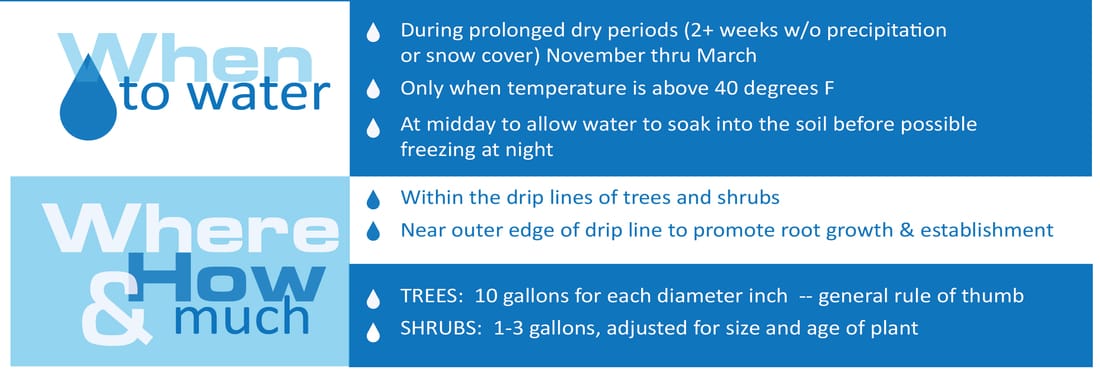 Say what? It's true I’ve drifted away from the practice of landscape architecture and more into marketing in recent years, but even so I’m wondering how it is I’ve kept at least one foot in the profession for decades now and still I’m thinking, “Winter watering? That’s a thing? Really?” For the record, this was also news to several of my fellow landscape architects at BRECKON landdesign. And yes, according to Scott Lebsack, RLA, of our Twin Falls office, winter watering most definitely IS a thing. In fact, it can be particularly important in high desert climates like ours that tend towards the cold and dry. In Idaho and other intermountain states, factors such as dry air and soils, low precipitation, and fluctuating temperatures, compounded by scant snow cover, can damage certain plants if supplemental water is not provided. Now that I think on it, this is a solid theory as to why the Schipka Laurel under the front eaves of my house have failed to thrive for two summers in a row. Winter drought damage – primarily to roots – is often invisible. That is, plants appear healthy enough, and use nutrients stored in their roots to fuel springtime growth. They then become stressed when summer temperatures rise and damaged root systems prove inadequate to hotter, drier conditions. And it’s not any kind of revelation that weakened plants tend to suffer more from insect or disease problems. Plant types more vulnerable to winter damage when conditions are dry:
The latter almost always benefit from supplemental winter watering during establishment (typically defined as the one year period after planting). For young plants, supplemental water may not be a life-or-death issue, so much as the difference between thriving, or merely surviving, the first couple of winters. Winter watering also speeds plant establishment. So, now that we’re on to the potential benefits of supplemental watering during the colder months (and yes, be prepared to hook up that hose or schlep your watering can around if you’ve properly winterized your irrigation system), what’s the best way to go about it? Following are general guidelines for supplemental winter watering. And remember – an organic mulch layer (2-3" deep) is a great way to retain soil moisture and protect plant health during ALL seasons. Posted by Kim Warren
Sources: Klett, J. E. "Fall & Winter Watering, Fact Sheet No. 7.211." extension.colostate.edu. Colorado State University, Mar. 2013. Web. 22 Dec. 2016. Klett, J.E., and C. Wilson. "Winter Watering." Tall Timbers. N.p., July 2008. Web. 22 Dec. 2016.
0 Comments
Leave a Reply. |
AuthorsArchives
January 2017
Categories |
Portfolio |
|


 RSS Feed
RSS Feed
